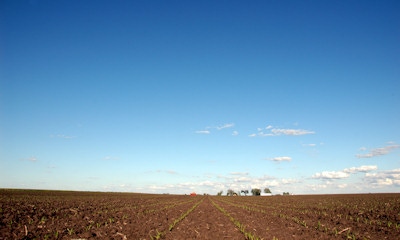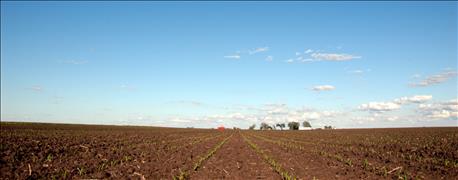
What’s necessary? What’s extravagant? What do I need? What will make me money?
Those are the kinds of questions both farmers and agronomists are asking this season, as margins remain tight and cutting corners becomes ever more tempting. Matt Montgomery, Burrus sales agronomist, has some sage advice: “Don’t go crazy. Don’t cut corners.”
Kelly Robertson agrees. “You want to manage costs, not cut costs,” says the Benton agronomist and owner of Precision Crop Services.

MORE? Agronomists take a hard look at whether throwing ever more products at a crop, with the hope of producing ever more bushels, will actually pay off in 2016.
What pays off? “If there’s an investment you’re making and it doesn’t yield a few extra bushels 60 to 70% of the time, you need to ask if it’s worth it,” Montgomery advises. “If not, you probably don’t need to be spending those dollars in this environment.”
Here, the agronomists offer a look at the 10 best ways you can spend – and save – money on corn this year.
1. Get the right nitrogen rate.
Tempted to throw on extra or cut way back? Either decision has ripple effects, Montgomery says. “People want to skimp on nitrogen but we all know it has a direct effect on yield.”
Montgomery recommends the university MRTN calculator (also available as a smartphone app). Stick with it and if your rates are more than recommended, you’re probably getting extravagant.
You have to make the trip across the field at some point, so Robertson says to factor in that cost from the beginning – whether it’s pre-plant or sidedress. The sidedress advantage: you can probably use less N when you know the crop looks good, you have a great growing season and there’s reduced chance of N loss.
2. Maintain fertility.

EXPERIENCE: “Think about the things you’ve learned over lots of years of hard experience,” says Burrus agronomist Matt Montgomery.
Montgomery says if you’ve done a good job building up P and K, this might be the year for maintenance applications. “Don’t not put anything on, or you’ll get used to not spending the money,” he adds.
Some locations might need micronutrients, but do they offer consistent return? Plant test strips and figure out what you really need.
3. Avoid fertilizer substitutes.
Avoid “magic sauce,” Montgomery says. Thin margins bring people out of the woodwork who will recommend products to magically release stored P and K from the ground. When you’re under pressure, it’s easy to convince yourself that maybe you’ve done it wrong all along.
“But this is the too-good-to-be-true scenario. Think about the things you’ve learned over lots of years of hard experience,” he adds.
4. Scout first, spray later.
Fungicide and insecticide shouldn’t be assumed, Robertson says. “We’ve been conditioned to do it, but it’s not an automatic in my book.” Applications in recent years didn’t always increase profitability.

BOTTOM LINE: “Managers are going to make money,” says Benton agronomist Kelly Robertson. “Or at the very least, managers are not going to lose money.”
Scout before applying fungicides or insecticides, and look for economic treatment thresholds. “With non-weed pests, everyone can improve efficiency by scouting,” Montgomery says. “Everybody hates it and I understand why. But if you can scout, those dollars will pay off.”
He recommends applying fungicides only on your most conducive hybrids, in the most conducive environments: “Don’t blindly apply and hope it pays off.” Sit down with an agronomist and ask whether the hybrid will respond to fungicide.
Insecticide doesn’t really “fly free,” Robertson adds, contrary to sales pitches. It’s always an additional cost per acre. “It’s very difficult to find 50% of farmers who know what that insecticide is controlling.”
5. Get seed treatments right.
When you have three rate choices in neonicotinoid seed treatments, Montgomery says the lowest rate catches cutworms, medium rate will take care of extreme populations, but he’s not certain the highest rate will always pay off.
In soybeans, a lot of new products promise reduced SDS pressure. You don’t need it on every acre, but Montgomery recommends it for early planted acres.
6. Don’t skimp on weed control.
Resistant waterhemp has created wooly fields, best controlled with a switch to Liberty and residual products. Montgomery’s heard of people going back to glyphosate due to price pressure and while it might work for some, if you’ve had extreme weed pressure in the past and haven’t been able to stay on top of it, it won’t work for you. “The resistance issue hasn’t disappeared,” he adds.
7. Evaluate N applications.
Soil scientists admit that what worked last year doesn’t work in most years. Montgomery rcommends farmers spread applications, which spreads efficiency and risk. “You don’t know what’s coming so spread your risk out,” he adds. “Don’t put all your eggs in one basket with nitrogen.”
8. Stick with the plan.
It’s tempting to kick N rates up or down when you get to the field, or when you check markets that morning. Pull yourself away from emotion and stick with your plan, Montgomery recommends - advice that applies to all sorts of decisions.
“If the crop looks peaked and needs extra nitrogen, that’s one thing,” he says. “If you look at the market that morning and decide to pull back or bump up, that’s emotion driving it instead of agronomics.”
9. Choose seed wisely.
Do you really need a triple stack? Or will a more basic hybrid do?
Montgomery reports that interest in integrated refuge products has remained high, despite price pressure. Maybe you can use a structured refuge product instead. “It’s not as convenient but you could sacrifice some convenience and save some dollars,” he adds.
10. Do math.
“We’ve spent money like drunk sailors the past 2 to 3 years,” Robertson says. “We’ve lost the ability to do simple math in high corn prices.” He offers up the example of the farmer who bought a new sprayer, but spent 25% of the sprayer’s cost on custom application because it worked better to have the dealership do it some days. High-value assets need to be used well or sold.
Figure up nitrogen applications too, before you finalize your plan. Multiple applications are recommended and may work well, but sometimes a single trip with a little more nitrogen is more cost effective, Robertson says. Look at equipment costs and consider that every acre has to pay for that piece of equipment.
And in the end?
“The farmers looking for soil samples, VRT, scouting, they’re looking at the right things,” Robertson concludes.
“Managers are going to make money. Or at the very least, managers are not going to lose money.”
About the Author(s)
You May Also Like






